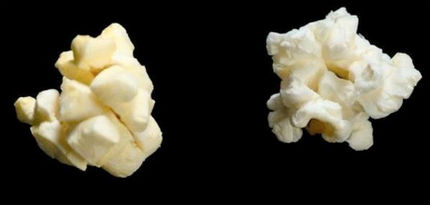Cystic fibrosis bacteria could help fight back against antibiotic resistance
A bacteria which infects people with cystic fibrosis could help combat other antibiotic-resistant microbes, according to a team from Cardiff and Warwick Universities.
Continuous use of existing antibiotics means that resistant bacteria are now causing major health problems all over the world. New antibiotics are urgently needed to combat the emergence of multidrug-resistant bacteria such as the MRSA superbug.
Now a surprising source of hope has emerged in the form of Burkholderia, a group of bacteria which can cause severe lung infections in people with the genetic disorder cystic fibrosis. However, the Cardiff and Warwick team has now discovered antibiotics from Burkholderia are effective against MRSA and even other cystic fibrosis infecting bacteria.
Dr Eshwar Mahenthiralingam, of Cardiff University's School of Biosciences, Cardiff University, has been studying Burkholderia for the last decade. Using forensic fingerprinting tests to genetically identify the bacteria, Dr Mahenthiralingam's research group has tracked strains all over the world and helped develop guidelines to prevent it spreading.
By the summer of 2007, Dr Mahenthiralingam had built up a large collection of Burkholderia bacteria. He and his team then decided to screen them for antibiotics active against other bacteria, particularly drugs with the potential to kill other bacteria that infect cystic fibrosis patients. Over the next two years, Dr Mahenthiralingam's team discovered that around one quarter of Burkholderia bacteria have very strong antibiotic activity on multidrug-resistant pathogens such as MRSA. One particular strain, Burkholderia ambifaria, was found to produce two very potent antibiotics active on resistant bacteria, in particular Acinetobacter baumanii.
The chemical structures of the antibiotics, called enacyloxins, were determined by Professor Gregory Challis and Dr. Lijiang Song at the University of Warwick, demonstrating that they belong to one of the most successful families of natural product drugs, the polyketides. Other examples of polyketides include erythromycin, which is used to cure many bacterial infections, and doxorubin, used as an anti-cancer drug. Professor Challis commented: "The combination of enzymes used by Burkholderia to make the enacyloxins is very unusual. Our insights into this process should allow us to use cutting edge synthetic biology techniques to produce novel enacyloxin analogues with improved pharmaceutical properties."
The team's findings have now been published in the journal Chemistry and Biology. Dr Mahenthiralingam commented: "Burkholderia are soil bacteria like Streptomyces, which are the source of most of our current antibiotics. Our research therefore offers real hope of a completely new source for the identification and engineering of highly potent antibiotics. With antibiotic resistant bacteria causing great suffering around the world, these new sources are urgently needed."
Organizations
Other news from the department science

Get the life science industry in your inbox
By submitting this form you agree that LUMITOS AG will send you the newsletter(s) selected above by email. Your data will not be passed on to third parties. Your data will be stored and processed in accordance with our data protection regulations. LUMITOS may contact you by email for the purpose of advertising or market and opinion surveys. You can revoke your consent at any time without giving reasons to LUMITOS AG, Ernst-Augustin-Str. 2, 12489 Berlin, Germany or by e-mail at revoke@lumitos.com with effect for the future. In addition, each email contains a link to unsubscribe from the corresponding newsletter.


















































